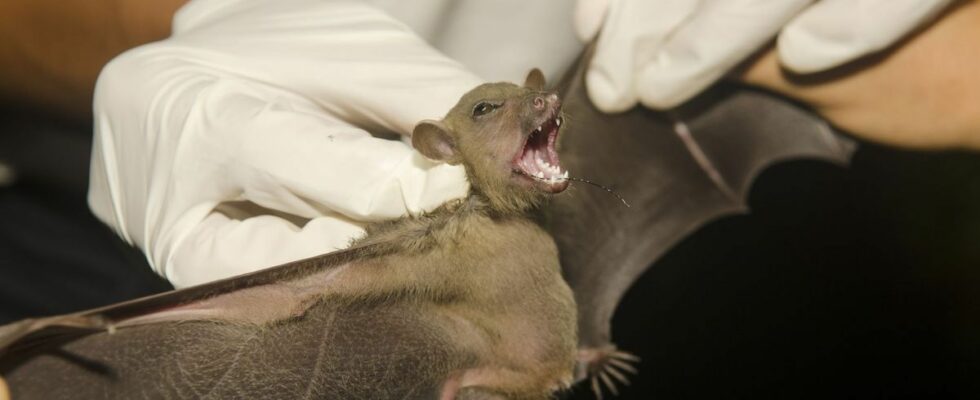Published on
updated on
Reading 3 min.
in collaboration with
Dr Gérald Kierzek (Medical Director)
A child died of rabies in Canada, in the province of Ontario, probably bitten by the bat that was found in his room. How to react in this situation? Dr. Gérald Kierzek, emergency physician, enlightens us.
A child, whose age has not been specified, died of rabies in Canada, in the province of Ontario. The cause: a bat found in his room.
In the absence of a bite, he is not vaccinated by his parents
The announcement was made by Dr. Malcolm Lock on Wednesday October 2 during a meeting of the health board of the riding of Haldimand-Norfolk, Canada. The doctor said the child, whose age has not been released, was exposed to the rabies virus in early September.
But the parents, not having noticed any signs of bite or scratch on their child, did not have him vaccinated against rabies. However, he was reportedly seen in hospital.
What is rabies?
The rabies virus is present in the saliva of infected animals. Its transmission occurs by direct contact between this same saliva and another animal or a human being, by biting, scratching or even licking the skin. “In Europe, rabies is largely eradicated, thanks to the vaccination of wild and domestic animals” indicates Dr. Gérald Kierzek, emergency physician and medical director of Doctissimo. “There are still a few sporadic cases, but they are generally linked to animals contaminated abroad..
In Canada, rabies is still present and continues to cause deaths each year, both in humans and animals, recalls Gérald Kierzek, although this is the first case in Ontario since 1967.The main vectors are canines (including dogs), cats and bats. adds the doctor.
“There rage is transmitted primarily through the saliva of an infected animal, usually through a bite or scratch that causes saliva to enter the body” confirms Dr Gérald Kierzek. The main routes of transmission are:
- The bite of a rabid animal, penetrating the skin;
- The scratch of a rabid animal, with the presence of infected saliva;
- Contact of saliva from a rabid animal with mucous membranes (eyes, nose, mouth) or an open wound.
On the other hand, recalls the medical director of Doctissimo, rabies “is not spread through the blood, urine or feces of an infected animal. It is also not transmitted by simple contact with the hair or fur of a rabid animal.“.
You should also be wary of an animal that appears healthy, because “The virus can be present in the animal’s saliva several days before symptoms appear, making transmission possible.”
What is the procedure to follow in the event of a bite by an animal potentially affected by rabies?
Dr. Gérald Kierzek recommends following the following steps:
- Clean the wound immediately;
- See a doctor promptly and contact an anti-rabies center. The doctor will check your tetanus vaccination status and prescribe antibiotic therapy if necessary.
“If the risk of rabies is proven, post-exposure prophylaxis (PEP) will be implemented, including anti-rabies vaccination and sometimes the administration of immunoglobulins.” he explains again.
Where possible, our expert also recommends monitoring the animal. Finally, know that rabies is not transmitted from man to man and that “the“infected animal becomes contagious from 15 days before the first symptoms of the disease appear and until its death” can we read on the website of the Ministry of Agriculture. This is why health authorities advise against “handling wild or stray animals, especially when they are found sick or injured”.
Once declared, the disease is almost constantly fatal due to lack of effective treatment. Rabies is responsible for approximately 59,000 annual deaths worldwidemainly in Asia and Africa, most often following a bite by a rabid dog.
